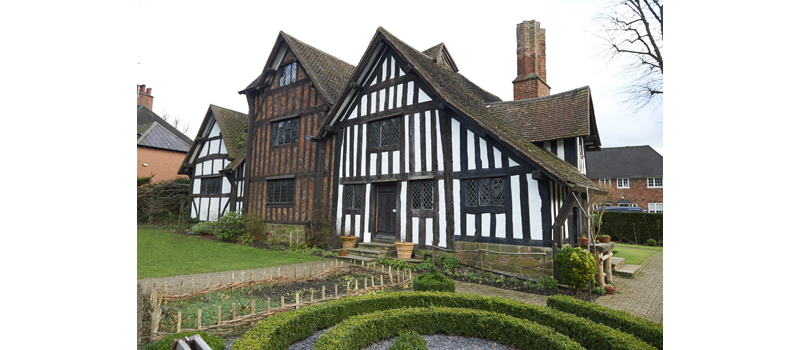
Two Keston 30kW system boilers have been installed as part of a refurbishment project at Selly Manor Museum, a Grade II* listed Tudor house dating back to the 1300s.
Owned by Bournville Village Trust, Selly Manor is one of Birmingham’s oldest buildings and is visited by thousands of children and adults each year.
The Keston twin flue boilers were specified by SHEco Ltd. The new boiler system is more effective, resulting in a warmer building for enhanced user comfort and preventing the formation of damp, and much more efficient, greatly reducing running costs for Bournville Village Trust.
The previous standard efficiency floor standing boiler was installed in the basement plant room and had been running for over 25 years. Following a period of bad weather, the plant room had been badly flooded, resulting in complete boiler failure. The Trust had set up electric heaters throughout the house as a short term solution, but these were expensive to run, offered little control and were ineffective, making it difficult to prevent damp.
Selly Manor is protected under the provisions of the Planning (Listed Buildings and Conservation Areas) Act 1990 and consequently any work carried out needs to be assessed and approved by the local planning authority to ensure it complies with strict criteria. For example, the boiler flues were not allowed to be visible on certain external walls and any flueing work needed to be as discreet as possible so as not to detract from the character of the building.
Ian Shorter, Installation and Service Manager at SHEco, specified the Keston 30kW twin flue System boilers to meet these demands. He made the decision to turn the existing open-vented boiler system into a sealed system by capping off the tank situated at the top of the building. One of the main reasons was to eradicate the possibility of water leaking out into the loft and causing damage to the building, further safeguarding this ancient building and preserving it for the enjoyment of future generations. After running a new, larger gas pipe into the plant room to meet the requirements of the new system and replacing the main flow and return pipework, the SHEco engineering team installed the boilers directly onto the wall.
Due to their compact size, the team had no trouble manoeuvring the Keston boilers in the small plant room space. The main challenge they faced was how to run the twin boiler flues out of the basement plant room, as one flue needed to be tracked around the circular entry staircase and the other needed to be long enough to reach the existing chimney.
Ian explains: “The old boiler was connected to an open flue chimney liner in order to discharge waste gases outside the building. A long flue run was required to enable the new boiler flue to reach the chimney and, as a result, other boiler companies said that the chimney would need to be replaced and relocated, which would have been difficult within the listed building criteria as well as expensive.
“However, after a site visit from Keston to discuss the options, we discovered the Keston boilers could achieve the required flue runs which totalled over 23m, meaning we could utilise the existing chimney. This prevented complications with planning permission and installation, as well as saving time and money.
“The MUPVC solvent weld flues designed and supplied by Keston also solved multiple issues, as stainless steel flues would have been too conspicuous and heavy. Keston’s plastic flues were coloured to blend into the brickwork and so are barely noticeable.”
Energy efficient controls were also installed, allowing the boilers to communicate with an external wireless room stat located at the top of the stairs. This controls the new convector heaters located throughout Selly Manor, allowing them to switch on only when the boiler reaches the required pre-set temperature, thereby minimising energy use and reducing the demand on the boiler.












